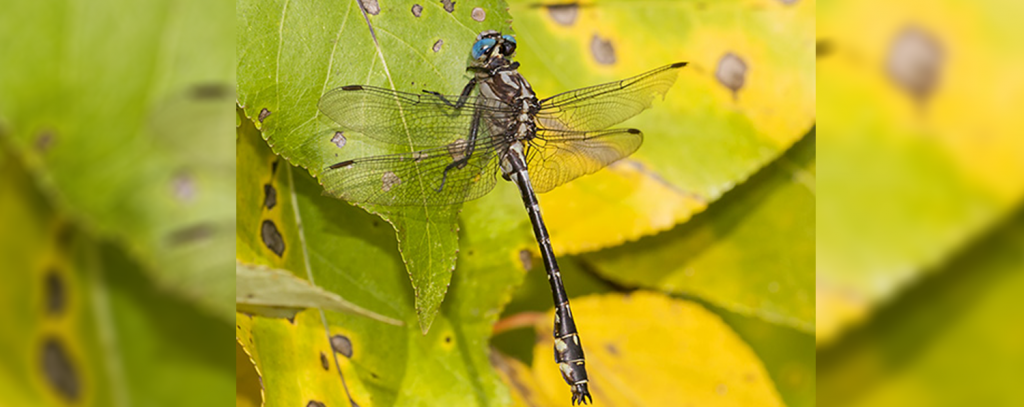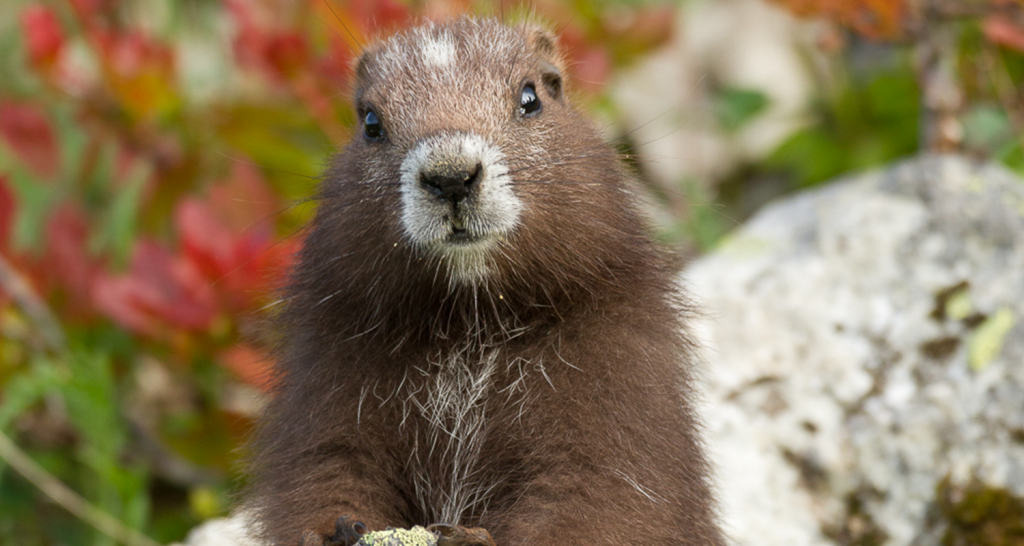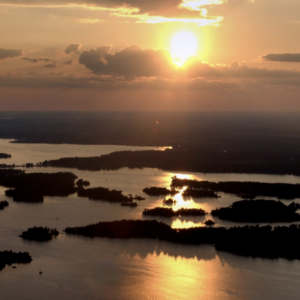Nature Conservation Awareness for Kids: Endangered Species Activities
An important way to help children understand the current situation that Canada’s nature is facing is by teaching them about the beautiful and endangered species that exist in Canada, and encouraging them to participate in nature conservation. Introducing ways in which children can participate in nature conservation is a great opportunity for them to learn about the amazing species across Canada.
This article will provide educational activities that can be used to encourage our children to have an interest in the many endangered species in Canada. Most importantly, the article provides information about how children and their families can participate in nature conservation. These educational activities will allow children to learn about several endangered animals, specifically, the Canada Warbler, the Olive Clubtail dragonfly, and the Vancouver Island marmot.
Endangered Species in Canada
Canada is home to a plethora of beautiful wildlife. Sadly, there are hundreds of species that are endangered or under threat from human and environmental factors. Many are affected by habitat loss, environmental disturbances, human activity, as well as climate change. Across the country, there are over 700 different plants and animals that are facing this reality.1 These creatures are all a part of the delicate balance that keeps Canada and the planet healthy. This is why it’s so important for children to learn about the endangered species in Canada and understand why it’s imperative to promote nature conservation efforts across the country.
Nature conservation efforts are happening across Canada to make sure these threatened and endangered animals will have a future. Featured in this article are three unique species: the Canada Warbler, the Olive Clubtail dragonfly, and the Vancouver Island marmot. These species are very important for Canada’s biodiversity and are in need of help for their survival. Children will be able to learn about these endangered animals and find out ways that they can get involved in the current conservation efforts taking place. Let’s get to know these three special creatures!

The Canada Warbler
The Canada Warbler, also known as the ‘Necklace Warbler’ because of the stripes on its upper chest, is an adorable species of bird found in Canada. This makes it easier to spot if you know what to look for! The Canada Warbler is a small bird with a blue-grey tail and a brightly coloured chest and throat of yellow. To tell the males apart from the females and the young birds, look for the black colouring around the features of the face.2
Canada Warblers can be found across the country in mixed forests (deciduous-coniferous), from the Yukon, Northwest Territories, Ontario, Quebec and the Maritime provinces. Their migration route leads them all the way to the Andean forests of South America! How cool is that?3
Currently, there are 2.7 million Canada Warblers, however their population is declining at 4.5% per year. This is mainly due to deforestation. The forests in the northern Andes where the Canada Warbler makes it’s winter home is under serious threat due to human impact. Agriculture, cattle farming, coffee production and other activities directly affect the Andean forests. Internationally, conservationists are working to protect these forests so that Canada Warblers can continue to make their journey every year.4
So, what can kids do to help protect the Canada Warbler and other endangered birds? Firstly, parents and educators can teach children about birds like the Canada Warbler, and help children to understand how birds are affected by environmental issues. Furthermore, families can visit their local nature conservation areas and join local birding groups to see what their communities are doing to protect these amazing creatures. Children can also learn about Nature Canada’s Bird Friendly City campaign and the Save the Swallows campaign, to learn about bird conservation in their area. Finally, you can also visit Nature Canada’s Cats and Birds website to learn more about protecting our feathered friends from housepets like Cats.
Educational Activity: Migration Map Colouring Page
The Canada Warbler makes the long flight from Canada to South America every year during migration season. To help children understand and imagine this long and difficult journey, try using this migration map colouring page to visualize where the Canada Warbler travels.

Olive Clubtail Dragonfly
The Olive Clubtail Dragonfly is an endangered and rare type of dragonfly found in The United States and Canada. In Canada, the Olive Clubtail dragonfly can only be found in a few locations in British Columbia. This rare dragonfly can be found in the South Thompson Creek, Christina Creek, and in the Okanagan Valley.5
Olive Clubtail dragonflies live in rivers and streams. Female Olive Clubtail dragonflies lay their eggs on the surface of these rivers and streams. Then, the larvae hatch from their eggs, and bury themselves into the mud along the water. For two years, they will remain in the mud and eventually break free out of the water into beautiful adult dragonflies. To see the Olive Clubtail dragonfly in flight, it needs to be between mid-July until October. During this time, females will fly along the shoreline, while males fly over the open water.6
Due to the rarity of this dragonfly, it is an important indicator of the health of their habitat. The Olive Clubtail is threatened by many types of human activity, such as river channeling, human settlements and marinas, transportation, human activities such as swimming, pesticides and other pollutants.7
What can we teach children that will help the Olive Clubtail? To help protect these rare and important creatures, kids can make sure not to disturb the areas where Olive Clubtail dragonflies are found. When the mud where the larvae are buried is disturbed, the survival rate of the dragonfly decreases. This is a simple yet impactful way for children to promote the conservation of these dragonflies.8
Educational Activity: Spot the Dragonfly Colouring Page
The Olive Clubtail dragonfly is rarely seen, and has a specific and limited habitat. For children to learn about the rarity and the habitat of this dragonfly, try this counting and colouring activity.

The Vancouver Island Marmot
The Vancouver Island marmot is a very special animal in Canada, because it is found nowhere else on earth. According to the Marmot Recovery Foundation, the Vancouver Island Marmot should be thought of as one of the rarest mammals on the planet.9 This small and furry creature is only found in the wild on Vancouver Island in meadows.
Due to conservation efforts, the Vancouver Island marmot population is increasing. In 2003, there were less than 30 marmots left in the wild. In 2019, there were an estimated 200; however there may be more that have not been spotted.10
The Vancouver Island marmot is the largest type of ground squirrel – around the size of a housecat. The Vancouver Island marmot also has a different colouring than other marmots, with dark brown fur and white spots on its nose and chest.11 When a baby is born, it is completely black, and will grow into its dark brown colouring as it grows up.
The Vancouver Island marmot live in family groups, and are very social creatures. Marmots live in family groups called colonies, which usually have around 7 members. Originally, the Vancouver Island marmot was found only in the meadows of the Nanaimo lakes, but has been introduced to other parts of the island to maintain its numbers. The Vancouver Island marmot is not only threatened by intense habitat loss, but also by predators such wolves, cougars and golden eagles. Due to habitat loss and predation, conservation of the marmot is challenging.12
To get involved in conservation efforts of the Vancouver Island Marmot, children can help by raising awareness of these endangered creatures. Visit the Marmot Recovery Foundation’s website to see how students are helping conservation and awareness efforts.
Educational Activity: Fill-in-the-Blank Activity Sheet
The Vancouver Island marmot lives in colonies of around 7 individuals. Currently, there are around 20 known colonies on the island. As well, the Vancouver Island marmot is unique to other marmots. Not only are they unique to the Island, but also have special colouring. To teach children about how the marmot is unique and how conservationists keep track of them, try this activity sheet.
These educational activities are designed to inspire little ones to learn about endangered species in an interactive way. Through learning about the uniqueness of each animal, children are able to understand the problems facing endangered animals, and how they can play a part in nature conservation. Hopefully this article about endangered animals in Canada can be used as an educational tool to help children understand why nature conservation is so important.
This article was written by Rachel Solway on behalf of Babysits Canada. You can visit this babysitting platform to easily and quickly find a reliable babysitter, nanny and childminder in your area!
1 Canada Wildlife Federation: https://cwf-fcf.org/en/explore/endangered-species/?src=menu
2 Nature Canada: https://naturecanada.ca/discover-nature/endangered-species/canada-warbler/?
3 Nature Canada: https://naturecanada.ca/discover-nature/endangered-species/canada-warbler/
4 Nature Canada: https://naturecanada.ca/discover-nature/endangered-species/canada-warbler/
5 Nature Canada: https://naturecanada.ca/discover-nature/endangered-species/olive-clubtail-dragonfly/
6 Nature Canada: https://naturecanada.ca/discover-nature/endangered-species/olive-clubtail-dragonfly/
7 Nature Canada: https://naturecanada.ca/discover-nature/endangered-species/olive-clubtail-dragonfly/
8 Nature Canada: https://naturecanada.ca/discover-nature/endangered-species/olive-clubtail-dragonfly/
9 Marmot Recovery Foundation: https://marmots.org/about-marmots/current-status-2/
10 Marmot Recovery Foundation: https://marmots.org/about-marmots/current-status-2/
11 Nature Canada:https://naturecanada.ca/discover-nature/endangered-species/vancouver-island-marmot/
12 Nature Canada:https://naturecanada.ca/discover-nature/endangered-species/vancouver-island-marmot/



